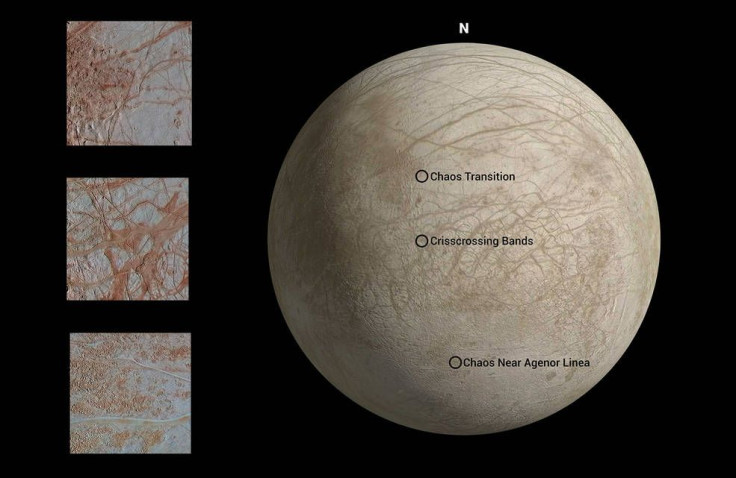NASA Unveils New Reprocessed Images Of Jupiter’s Moon Europa

KEY POINTS
- NASA released reprocessed images of Jupiter's moon Europa
- The photos were taken by the Galileo spacecraft
- The images show new features of Europa
NASA has released reprocessed images of Jupiter’s moon Europa that were taken during a previous flyby mission. According to the agency, the reprocessed images help in identifying new features on the moon in preparation for the Europa Clipper mission.
Europa Clipper is an upcoming mission currently being planned by NASA. Its main objective will involve using a robotic orbiter to study the moon Europa through a series of flybys. The mission is expected to launch in 2024.
In preparation for the mission, NASA has uncovered photos of Europa taken by the Galileo spacecraft in 1998. The photos were reprocessed in order to reveal the detailed features of the surface of Jupiter’s natural satellite.
Although the photos were taken over two decades ago, the images can still provide new information regarding Europa. By enhancing the images, NASA scientists are able to highlight new geological features that the human eye cannot see.
“Enhanced-color images like these allow scientists to highlight geologic features with different colors,” NASA explained in a statement. “Such images don't show Europa as it would appear to the human eye, but instead exaggerate color variations to highlight different chemical compositions of the surface.”
Through the reprocessed images, scientists are able to collect valuable information regarding the evolution of Europa. For instance, scientists believe that the dark lines on the surface of the moon were formed by the effect of Jupiter’s gravitational pull on Europa’s icy surface.
“The long, linear ridges and bands that crisscross Europa's surface are thought to be related to the response of Europa's icy surface crust as it is stretched and pulled by Jupiter's strong gravity,” NASA explained. “Ridges may form when a crack in the surface opens and closes repeatedly, building up a feature that's typically a few hundred yards tall, a few miles wide and can span horizontally for thousands of miles.”
NASA is hoping that through the reprocessed images, as well as the upcoming Europa Clipper mission, the agency will be able to learn more about the formation and composition of Europa. Aside from observing the planet’s evolution, NASA also wants to determine if the moon has the right environmental conditions to host alien life.
© Copyright IBTimes 2025. All rights reserved.





















